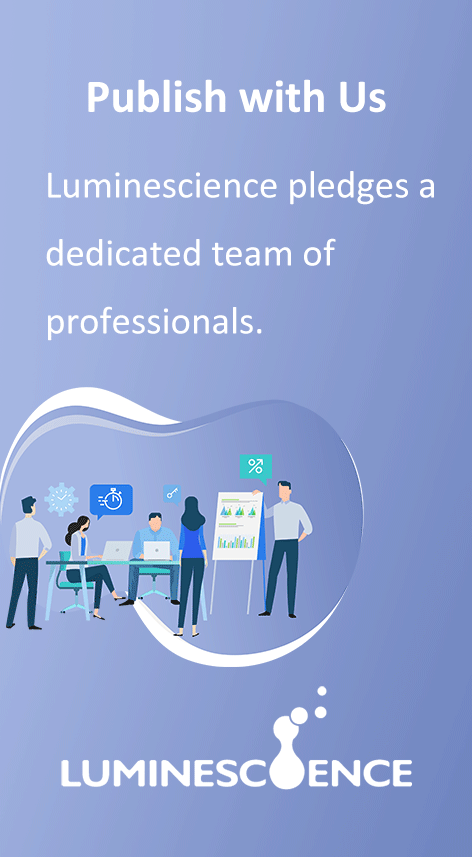Satish Prakash Chand 1 * # , Khemendra Kamal Kumar 2
# Satish Prakash Chand, and Khemendra Kamal Kumar contributed equally to this work
*Correspondence: satish.chand@fnu.ac.fj
DOI: https://doi.org/10.55976/rppe.320251381157-165
Show More
[1]Au, W. (2018). A Marxist education: Learning to change the world. Chicago Haymarket Books.
[2]Celik, S. (2019). Can differentiated instruction create an inclusive classroom with diverse learners in an elementary school setting? Journal of Education and Practice, 10(6), 31–40. http://eprints.tiu.edu.iq/710/1/234642410.pdf.
[3]Dennis, S. C. (2016). Implementing curriculum change in teacher education: A top-down approach. https://dspace.unza.zm/items/f1a0592d-543b-48f2-847c-c5d02be8c944.
[4]Fullan, M. (2015). The new meaning of educational change. Routledge.
[5]Gheyssens, E., Consuegra, E., Engels, N., & Struyven, K. (2020). Good things come to those who wait: The importance of professional development for the implementation of differentiated instruction. Frontiers in Education, 5. https://doi.org/10.3389/feduc.2020.00096.
[6]Gordon, D., Blundell, C., Mills, R., & Bourke, T. (2022). Teacher self-efficacy and reform: A systematic literature review. The Australian Educational Researcher, 50, 801–821. https://doi.org/10.1007/s13384-022-00526-3.
[7]Gouëdard, P., Pont, B., Hyttinen, S., & Huang, P. (2020). Curriculum reform: A literature review to support effective implementation. https://doi.org/10.1787/efe8a48c-en.
[8]Gray, L. (2024). Empowering educators: The impact of a professional learning program on collective teacher efficacy [Dissertation]. https://digscholarship.unco.edu/cgi/viewcontent.cgi?article=2048&context=dissertations.
[9]Griful-Freixenet, J., Vantieghem, W., Gheyssens, E., & Struyven, K. (2020). Connecting beliefs, noticing and differentiated teaching practices: a study among pre-service teachers and teachers. International Journal of Inclusive Education, 1–18. https://doi.org/10.1080/13603116.2020.1862404.
[10]Gupta, H. (2023, August 7). An alternative perspective on the teachers' role in curriculum development. https://elearningindustry.com/alternative-perspective-on-the-teachers-role-in-curriculum-development
[11]Holmqvist, M., & Lelinge, B. (2020). Teachers' collaborative professional development for inclusive education. European Journal of Special Needs Education, 36(5), 1–16. https://doi.org/10.1080/08856257.2020.1842974.
[12]Karakose, T., Polat, H., Yirci, R., Tülübaş, T., Papadakis, S., Ozdemir, T. Y., & Demirkol, M. (2023). Assessment of the relationships between prospective mathematics teachers' classroom management anxiety, academic self-efficacy beliefs, academic amotivation and attitudes toward the teaching profession using structural equation modelling. Mathematics, 11(2), 449. https://doi.org/10.3390/math11020449.
[13]Khalifa, M. A., Gooden, M. A., & Davis, J. E. (2016). Culturally responsive school leadership: A synthesis of the literature. Review of Educational Research, 86(4), 1272–1311. https://doi.org/10.3102/0034654316630383.
[14]Khasawneh, Y. J. A., Alsarayreh, R., Ajlouni, A. A. A., Eyadat, H. M., Ayasrah, M. N., & Khasawneh, M. A. S. (2023). An examination of teacher collaboration in professional learning communities and collaborative teaching practices. Journal of Education and E-Learning Research, 10(3), 446–452. https://eric.ed.gov/?id=EJ1408198.
[15]Koehler, M., & Mishra, P. (2009). What is technological pedagogical content knowledge (TPACK)? Contemporary Issues in Technology and Teacher Education, 9(1), 60–70. https://www.learntechlib.org/p/29544/.
[16]Lantz-Andersson, A., Skantz-Åberg, E., Roka, A., Lundin, M., & Williams, P. (2022). Teachers' collaborative reflective discussions on technology-mediated teaching: Envisioned and enacted transformative agency. Learning, Culture and Social Interaction, 35, 100645. https://doi.org/10.1016/j.lcsi.2022.100645.
[17]Maila, P., & Ross, E. (2018). Perceptions of disadvantaged rural matriculants regarding factors facilitating and constraining their transition to tertiary education. South African Journal of Education, 38(1). https://doi.org/10.4314/saje.v38i1.
[18]Makrakis, V., & Kostoulas-Makrakis, N. (2023). A participatory curriculum approach to ICT-enabled education for sustainability in higher education. Sustainability, 15(5), 3967. https://doi.org/10.3390/su15053967.
[19]NARST. (2018). Pedagogical content knowledge: Teachers' integration of subject matter, pedagogy, students, and learning environments. https://narst.org/research-matters/pedagogical-content-knowledge.
[20]Nayasi, K., Qabale, I., Tagimaucia, V., & Chand, S. P. (2022). Readiness to teach for cultural inclusivity and sustainable learning: Views of preservice primary teachers in Fiji. Issues in Educational Research, 32(3), 1020–1044. https://www.iier.org.au/iier32/nayasi.pdf.
[21]Nevenglosky, E. A. (2018). Barriers to effective curriculum implementation [Doctoral study]. https://www.proquest.com/docview/2047544332?pq-origsite=gscholar&fromopenview=true&sourcetype=Dissertations%20&%20Theses.
[22]Okoth, T. A. (2016). Challenges of implementing a top-down curriculum innovation in English language teaching: Perspectives of Form iii English language teachers in Kenya. Journal of Education and Practice, 7(3), 169–177. https://eric.ed.gov/?id=EJ1089803.
[23]Pak, K., Polikoff, M. S., Desimone, L. M., & Saldívar García, E. (2020). The adaptive challenges of curriculum implementation: Insights for educational leaders driving standards-based reform. AERA Open, 6(2), 1–15. https://doi.org/10.1177/2332858420932828.
[24]Rosy, B. (2024). Innovations in teaching practices. Journal of Higher Education Research, 2(05), 1469–1471. https://doi.org/10.47392/irjaem.2024.0198.
[25]Steenbergen-Hu, S., Makel, M. C., & Olszewski-Kubilius, P. (2016). What one hundred years of research says about the effects of ability grouping and acceleration on K-12 students' academic achievement: Findings of two second-order meta-analyses. Review of Educational Research, 86(4), 849–899. https://www.jstor.org/stable/44668238.
[26]Stenhouse, L. (1975). An introduction to curriculum research and development. Holmes & Meier Publishers, Incorporated.
[27]Suskie, L. (2018). Assessing student learning: A common sense guide. Jossey-Bass.
[28]Svendsen, B. (2020). Inquiries into teacher professional development—What matters? Education, 140(3), 111–130. https://www.ingentaconnect.com/content/prin/ed/2020/00000140/00000003/art00001.
[29]Swargiary, K. (2024). Curriculum development: Principles, practices, and perspectives. LAP Lambert Academic Publishing.
[30]Tomlinson, C. A. (2017). Differentiated instruction. In C. M. Callahan & H. L. Hertberg-Davis (Eds.), Fundamentals of gifted education. Routledge. https://doi.org/10.4324/9781315639987.0.
[31]Tran, V. D. (2023). Impact of teachers' self-efficacy on their work engagement: A case of Vietnam. Journal of Education and E-Learning Research, 10(4), 768–777. https://doi.org/10.20448/jeelr.v10i4.5202.
[32]Yang, W., Zhang, X., Chen, X., Lu, J., & Tian, F. (2024). Based case based learning and flipped classroom as a means to improve international students' active learning and critical thinking ability. BMC Medical Education, 24(1). https://doi.org/10.1186/s12909-024-05758-8.
[33]Zydziunaite, V., Kontrimiene, S., Ponomarenko, T., & Kaminskiene, L. (2020). Challenges in teacher leadership: Workload, time allocation, and self-esteem. European Journal of Contemporary Education, 9(4), 948–962. https://eric.ed.gov/?id=EJ1284184.
Copyright © 2025 Satish Prakash Chand, Khemendra Kamal Kumar

This work is licensed under a Creative Commons Attribution 4.0 International License.
Copyright licenses detail the rights for publication, distribution, and use of research. Open Access articles published by Luminescience do not require transfer of copyright, as the copyright remains with the author. In opting for open access, the author(s) should agree to publish the article under the CC BY license (Creative Commons Attribution 4.0 International License). The CC BY license allows for maximum dissemination and re-use of open access materials and is preferred by many research funding bodies. Under this license, users are free to share (copy, distribute and transmit) and remix (adapt) the contribution, including for commercial purposes, providing they attribute the contribution in the manner specified by the author or licensor.


Luminescience press is based in Hong Kong with offices in Wuhan, China.
E-mail: publisher@luminescience.cn